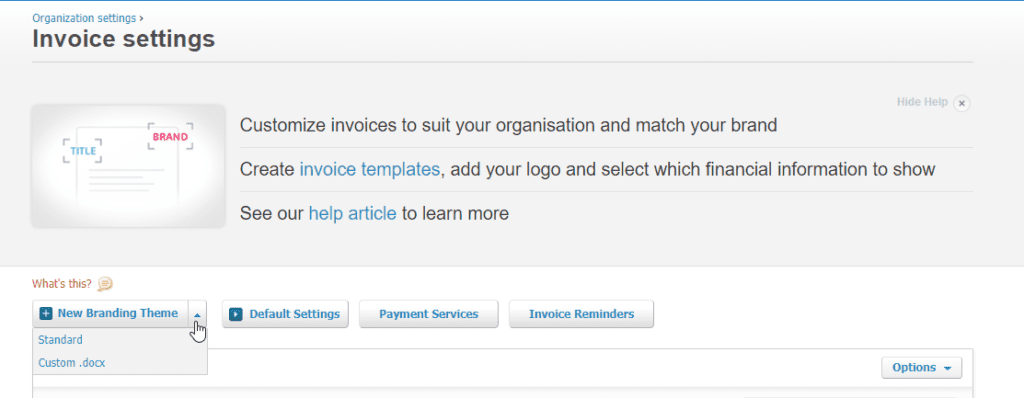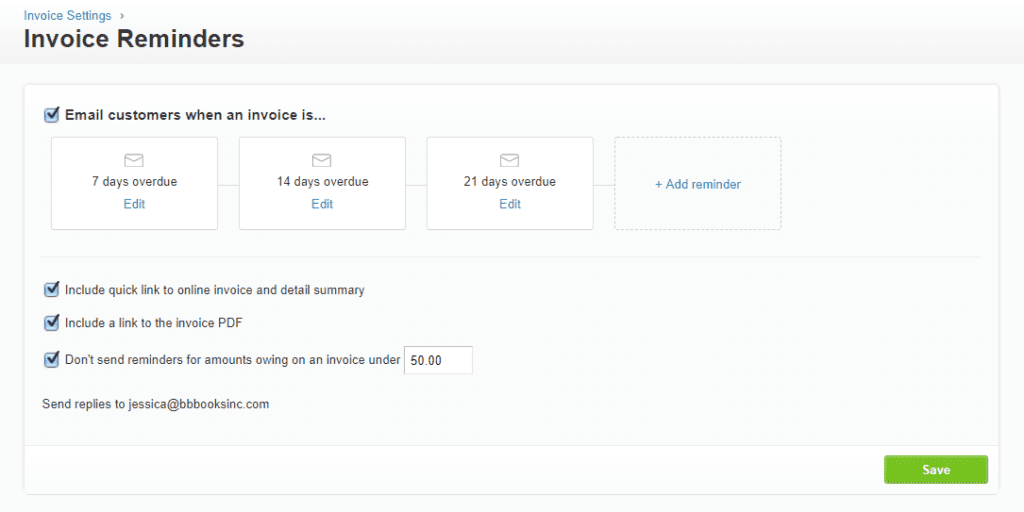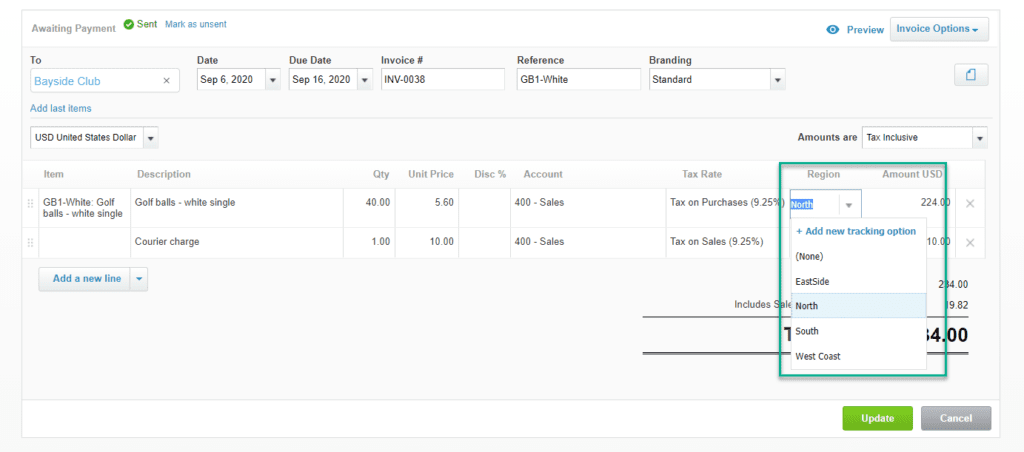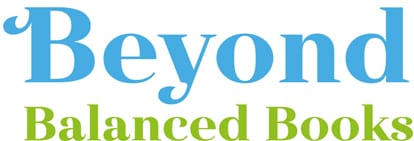Xero’s multiple subscription levels, hundreds of add-ons, and numerous settings help you mold its framework to fit the unique requirements and workflows of your company. This exceptional flexibility makes it a great application for countless types of businesses. However, customization options in Xero go even further. Below we discuss some of the additional customizations available.
Transaction Forms
It’s not just big corporations like Apple and Coca-Cola that have a brand identity. Your small business should, too. One way to reinforce this is by sending invoices, purchase orders, etc. that are tailored with personal branding, including your logo, your language, and your payment options.
Xero comes equipped with default form templates that can be altered to reflect your brand. You can also create multiple variations for different audiences.
To get started, click on the Company Menu to access Settings. Next, select Invoice Settings.
The Invoice Settings menu contains several customization tools that are simple to update.

New Branding Theme: Xero gives you two levels of customization here:
- The Standard theme is a template created by Xero. Customizing this theme is quite simple. You can insert your company logo and specify some of the fields, field names, and columns that appear by simply checking boxes or editing existing text.
- The Custom.docx theme is a template that can be altered in far more sophisticated ways through Microsoft Word. Please note that you’ll need some design skills to work with these more complex templates. We recommend using the Standard theme first to see if it fits your needs.
Default Settings: Do you want a default due date on invoices and bills? A standard prefix and starting numbers for forms? Should there be a link to outstanding invoices for each customer? Set those up here.
Payment Services: One of the best ways to improve your cash flow is to allow customers to submit their payments electronically. Through Payment Services, you can set up authorized gateways to receive payments, such as Stripe, GoCardless, or PayPal. Questions about how to proceed? We can help.
Invoice Reminders: Use the settings here to build email notifications to customers on overdue invoices, or remind them of upcoming payments due. Xero sets default reminders at 7, 14, and 21 days after the invoice due date, but you can create your own. Email templates associated with reminders can also be customized. You can stop reminders form going out for invoices that are partially paid or are under a certain threshold.

Financial Reports
We can customize financial reports like the Income Statement in Xero, but you have some options on other periodic reports that you create, too. With Xero’s reporting engine, you can adjust a variety of settings to create a report tailored to your needs.
One great example of this is with the Aged Receivables report. In our sample below, you can see the variety of settings available and how these can be updated to create a customized report.

Tracking Categories

Xero offers another very powerful way to customize the content of your reports with Tracking categories. We have previously discussed the benefits of using Tracking categories to segment your transactions. Through Tracking Categories, you can build additional insights into your financial reports.
For instance, if you want to compare the profitability of multiple sales outlets you could build a list of categories like EastSide, North, West Coast, and South, and name it Region.
Once you have set up this Tracking category and the related options, all applicable transactions in Xero will include an additional column with a drop-down list for this Tracking category. Simply select the option that best fits to assign it.

Tracking categories can add detail to multiple reports in Xero, such as the Budget Manager and Account Transactions reports, and financial reports like the Balance Sheet.
A word of caution regarding Tracking categories: Before enabling this feature, consider carefully if this is one your business really needs. We can help you determine what makes the most sense for your business – and which Tracking categories will make your reports more meaningful.
Xero is such a thorough, comprehensive application that you could use it as is. But if you haven’t already looked into its customization capabilities, it’s never too late to make it your own. We encourage you to explore the customization options above to enhance your Xero experience!
Updated 9/16/2020

